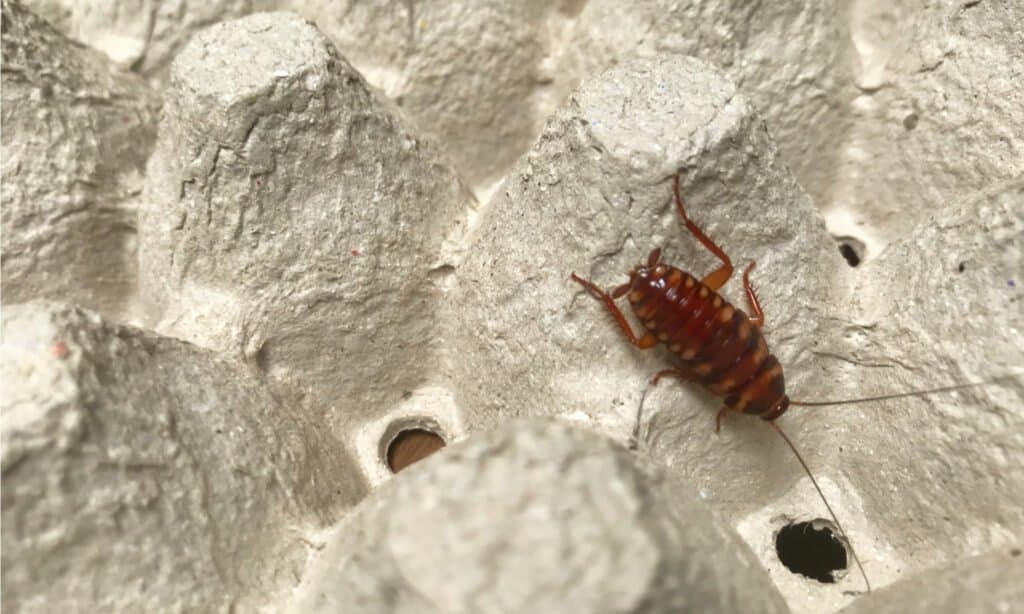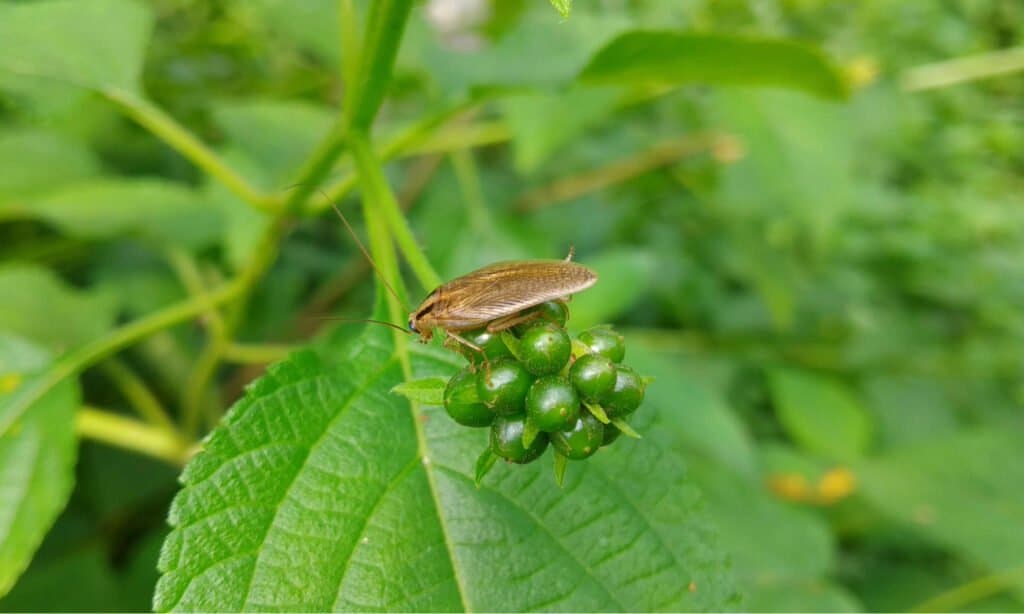Since they have existed for millions of years, cockroaches have developed into one of the most adapted pests on the planet. Cockroaches come in about 4,000 different species around the world. The United States is home to over 70 of these species.
Due to their preference for warm areas near food and water, cockroaches are frequently found in residences and structures. Sadly, cockroaches can cause allergies and asthma episodes, mostly in children. They have the ability to disperse 33 distinct types of bacteria.
Below we’ll talk about everything there is to know about these pesky creatures, including where they go when temperatures drop. While we hope you don’t have roaches in your home, this guide will include helpful tips and information!
Where Do Cockroaches Live?

Brown-banded cockroaches get their name from the two light bands they have across their dark brownish bodies.
©Freedom my wing/Shutterstock.com
American and German cockroaches are the two most prevalent roaches that threaten homes and businesses nationwide. There are also Oriental and Brown-Banded cockroaches here, though they’re not as common.
Cockroaches like damp, gloomy habitats with easy access to food and water. In addition to dwelling and reproducing within homes and buildings, they are also found in crowded metropolitan streets, gardens, underground tunnels, and sewage systems.
Particularly the huge American cockroach enjoys being outside. Since they require a consistent water supply, they are frequently observed near sewers, storm drains, gutters, and pipework. Another roach species that prefers moist, wet locations is the lustrous, black Oriental cockroach, commonly called a water bug.
Where Do Cockroaches Go in the Winter?

German cockroaches are common inside the walls of houses, condos, and other structures with temperatures above 50 degrees.
©gan chaonan/Shutterstock.com
When winter finally arrives in northern latitudes, people frequently long for the summer days. When the leaves change to gorgeous colors and start to fall into the gutters, there are some good things to keep in mind. All the flies, mosquitoes, and wood ticks from summer have died. The winter blues, however, are made worse for cockroaches when the disease-carrying pests go inside.
In the summertime, when temperatures rise, and humidity is prevalent, cockroaches multiply and reproduce. As the temperature falls below 50°F in the fall, some species of roach experience a significant die-off.
For instance, most wood roach adults pass away in the autumn, and the nymphs go into hibernation. The nymphs become adults when the temperature rises in the springtime again, and they start reproducing immediately to complete their life cycle.
The most annoying and hated roaches have additional tricks in their sleeves. German cockroaches, about half an inch long, are common inside the walls of houses, condos, and other structures with temperatures above 50 degrees. They can survive all winter by breeding and growing in the ceilings and sheetrock of your house.
Oriental cockroaches, the most resilient roach species, have comparable winter strategies. These bugs overwinter in drains, sewer lines, crawl spaces, and basements because they require water for survival.
When it gets below 15°F, the despised American roach cannot survive. But the bugs hibernate in rotting trees or wood piles during the winter. When frigid winds blow, they also go inside structures with moderate temperatures.
Preventing Roaches in Your Home

An Asian cockroach on weeds. Oriental cockroaches are also known as water bugs because they belong in or are found in drains.
©Ujung Lensa/Shutterstock.com
As the temperatures drop, you’ll want to prevent these little critters from making your home their own. This will be your main focus as they’re attracted to food and water. For example, if you have a leaky faucet or a teenager who doesn’t clean up after themselves, now’s the time to address it!
Cockroaches can live comfortably in even the most spotless dwellings. Roaches can survive on very little food and water. They frequently only require a small collection of crumbs and a few drops of water to survive.
Proper maintenance habits are essential for cockroach population reduction both inside and outside. To prevent an infestation, keep your kitchen and other places devoid of items that could serve as cockroach food. Regular vacuuming can also aid in getting rid of egg sacs, and roach remains. Proper cleaning of roach-infested surfaces is also advised in addition to vacuuming.
Cockroaches looking for a new home can be found in supermarket bags, storage boxes, and shipments. When you move boxes into your house from the shed or other storage spaces, make sure to thoroughly check them before getting rid of the package.
Check your paper grocery bags and packages when you bring your groceries indoors. Always immediately put things away, and get rid of any cardboard boxes or other materials that may contain harmful pests.
The photo featured at the top of this post is © gan chaonan/Shutterstock.com
Thank you for reading! Have some feedback for us? Contact the AZ Animals editorial team.






